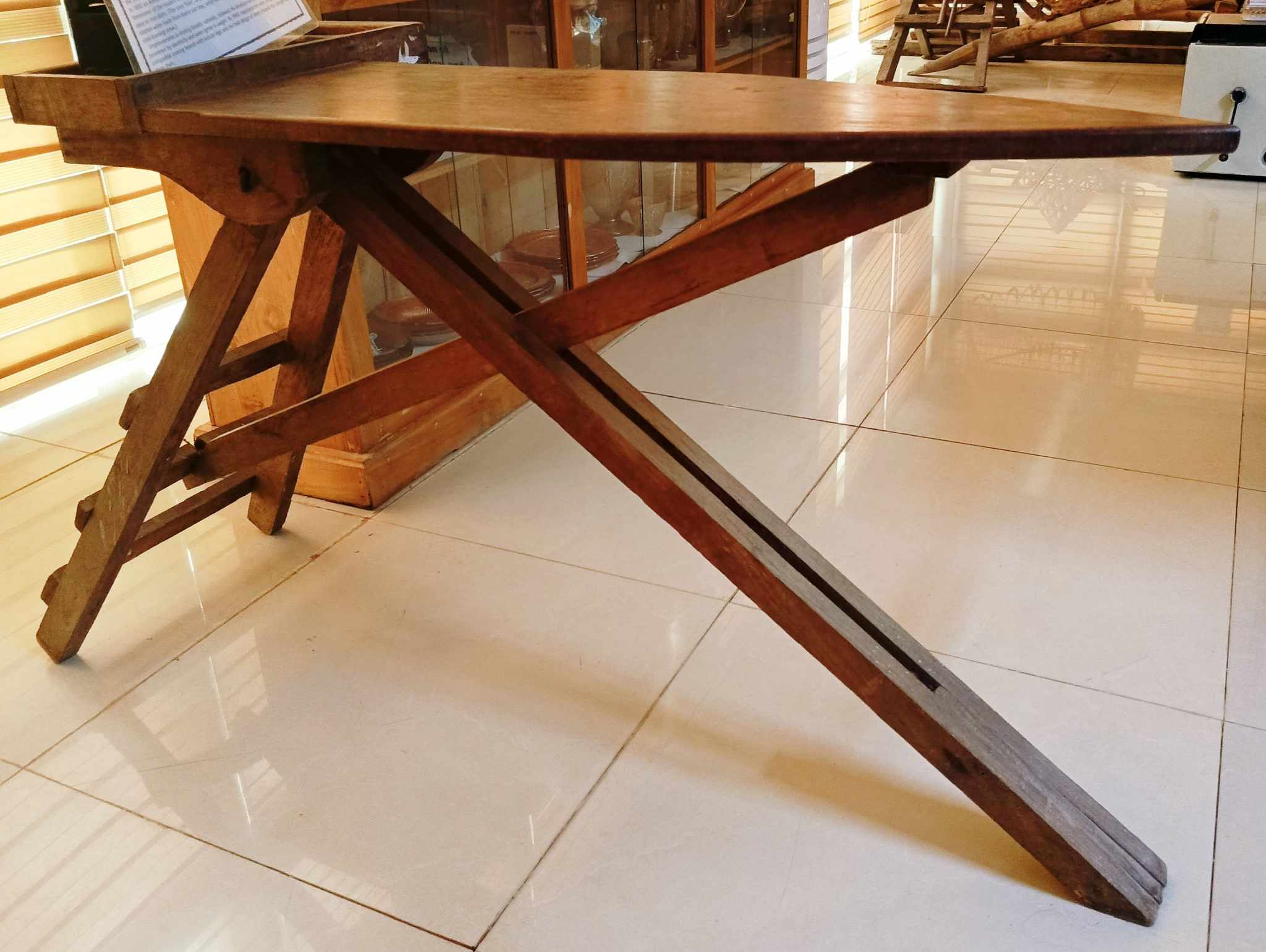Description
The earliest known ironing boards were used by the Vikings in the 9th century. They were made from flat pieces of whalebone, on which Viking women would press their clothes using heated rocks. Later, in Europe, it became common for people to iron their clothes on the kitchen table, or on a flat piece of board resting between two chairs. This practice spread to North America and by the early19th century there was plenty of advice in housekeeping books about what size an ironing table should be, what it should be made of, and what sort of blanket or cloth it should be covered with. About the same time, several ironing boards started appearing on the market but there is some controversy over who actually invented the ironing board. In 1858 W. Vandenburg patented what he called the ironing table and about three years later Isaac Ronnie Bord of Georgetown, Delaware, took out a patent for an adjustable flat horizontal surface for the pressing of undergarments, garments and bed linen. In 1892 an African American woman, Sarah Boone, patented an ironing board that was the forerunner of the modern folding ironing board with a narrow, curved shape, designed to make it easy to iron shirts. (The term
